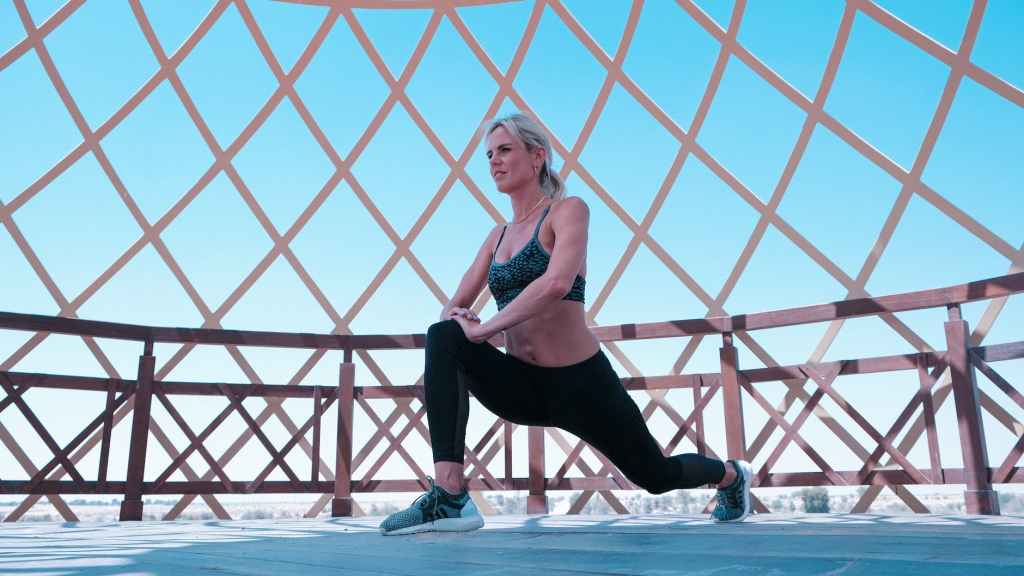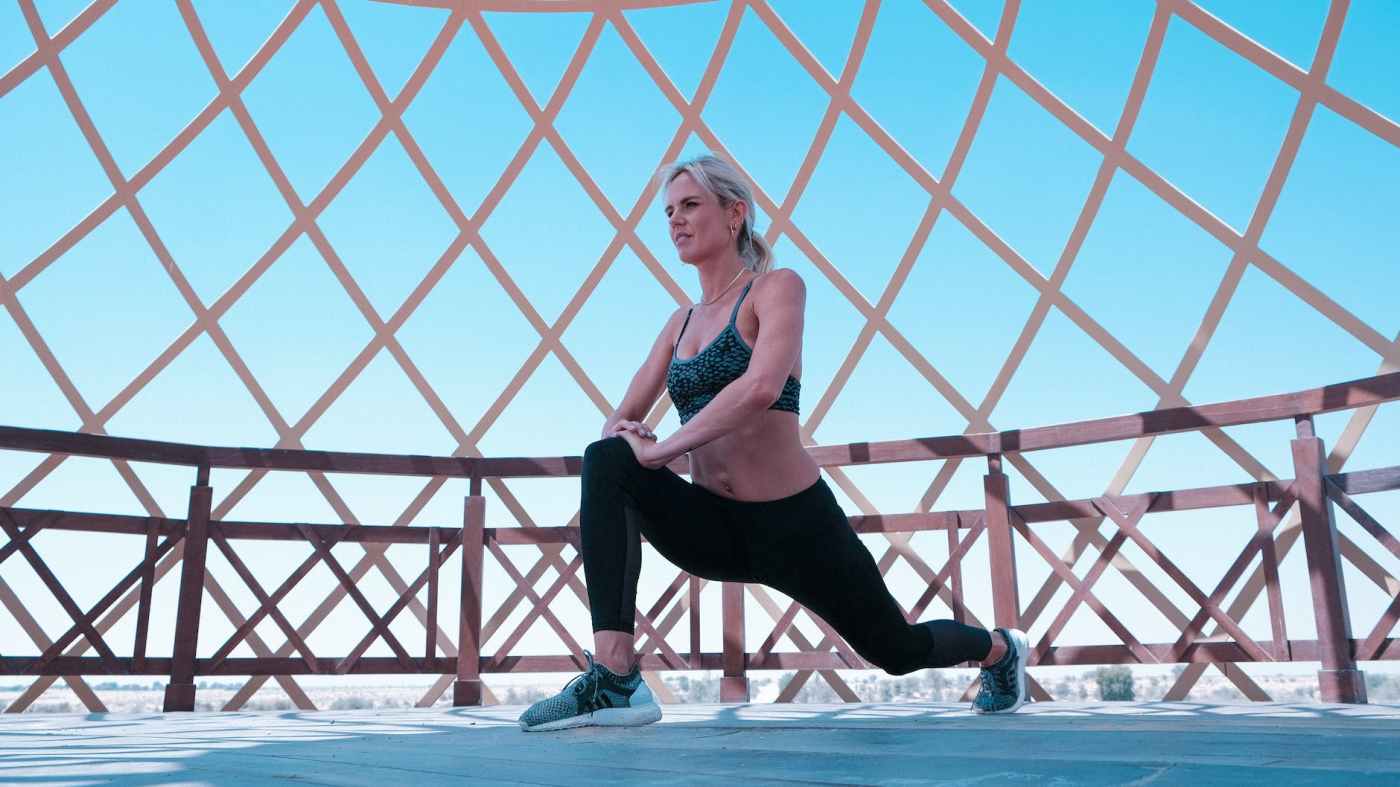
Lunges are the basic exercise that improves hip mobility, balance, knee strength, and ankle strength. There are many exercises for toned legs, but you should never miss lunges. When you want to improve flexibility, you need to start doing lunges. The hip joints are connected to the lower backbone of the spinal region. Therefore, doing lunges regularly also keeps the posture correct.
The largest number of muscles located at the back of the hips is called the gluteus maximus. We use it to perform everyday functions and during sports activities. Being so near the central axis of the body, the hips manage the distribution of the body’s weight. This helps us move in different directions. Doing lunges makes the most use of the hips and leg muscles. Strengthening these muscles also prevents many injuries.
Disclaimer: All content in this post is for general health information only. Please consult a specialist physician before trying any new exercise, diet, or health advice. There are no affiliate links attached to this post.
Do’s and don’ts of performing lunges properly
Balance and strength work together while doing lunges. Lunges can be part of your warm-up or can also be done as static stretches after your workout session. Here are the dos and don’ts of performing lunges properly.
When doing lunges, you should always warm up properly.
The position of your feet, ankles, knees, and hips should always be parallel to each other.
Turning any of the joints inward or outward is incorrect form.
Your feet should be firmly planted on the floor without any wobbling or disbalance.
Be gentle on your hamstring, especially when moving in any direction while doing lunges.
Jumping into lunges is difficult. It’s advisable to perform jumping lunges under the supervision of your coach or after consulting an expert physician.
How to perform the basic lunges

Step 1. From a standing position with both legs together, squat and touch the floor.
Step 2. Come to the tabletop position.
Step 3. Bring your right leg forward at a ninety-degree angle.
Step 4. Your left leg’s knee should be comfortably placed on the floor, and the base of your ankle should be resting on the floor.
Step 5. Slowly lift your left knee up and balance on your left foot.
Step 6. Keep your spine straight and place both your hands on your right knee.
Step 7. Stay there for 10 seconds, and then bring your lifted knee back to the floor.
Step 8. Repeat the same exercise on the left leg.
Here are the different variations of lunges you should include in your everyday exercises. Repeat each exercise 5 times on each leg.
Forward Lunges
These are the basic lunge movements that can be done at any comfortable height. The deeper the lunge, the more difficult it becomes to maintain balance. Having good hip mobility does not mean that you will be able to maintain strength during lunges.
Reverse Lunges
In Reverse Lunges, instead of moving your right foot and leg forward, move them backward. It is much more challenging because you cannot gauge with your vision how much space your legs are covering to maintain proper balance. It is a challenging exercise that can be mastered with a lot of focus.
Side Lunges
In Side Lunges, you move laterally with your feet pointed either forward or to one side. The challenge in Side Lunges is to keep the back straight even when you move sideways. This exercise works the inner thighs.
Curtsey Lunges
Another exercise variation that challenges your balance is the Curtsey Lunges. Since you are crossing diagonally backward, it requires you to maintain the correct form of the hips and ankles. You can keep your hands on your hips.
High Knee Lunges
High-knee lunges are the best way to work your quads. It is a great cardio workout that balances speed with strength. Lunges are a great bodyweight workout. And therefore, the number of lunges does not matter as much as performing lunges properly.
Alternate Leg Jump Lunges
Instead of doing lunges as part of your after-workout stretches, do them as part of your cardio routine with Alternate Leg Jump Lunges. Every time your foot touches the floor, it should be stable and balanced. The height of the jump is not important. But what’s important is the placement of the hips, knees, and ankles.
High Jump Lunges
Performing High Jump Lunges requires a great deal of strength. It is a wonderful exercise that also strengthens core muscles.
Hip Dips
Perform the Forward Lunges as mentioned above. Instead of simply staying in a lunge position, you can dip your hips in place or gently move your hips forward and backward to improve mobility.
Yoga Stretch Lunges
Include more dynamic movement with yoga stretch lunges. It works on leg and spine muscles simultaneously. This dynamic exercise is a popular yoga movement called “Surya Namaskar.” As the name of the exercise suggests, “welcoming the sun,” it is done early in the morning facing the sun. By performing this exercise, you are receiving blessings from the Sun God.
Side Stretch Lunges
The Side Stretch Lunges could be challenging for some people. This exercise requires strength, balance, flexibility, and coordination. Once you are in the basic lunge position, keep leaning towards your forward leg, place one hand on the floor, twist your upper torso, and at the same time raise your other arm towards the sky. This exercise is great for relieving stiffness from the back due to sitting for a long time at a desk.
Spine Overstretch Lunges
Just like in a cobra stretch, the spine overstretch lunge also releases the tensed muscles of the back. While in a low lunge position, raise both your arms towards the sky, stretch your neck, and look up. Now, gently bend your back further back while maintaining proper balance, follow the direction of the arms, and keep looking in the same direction as the arms.
High Knee Static Stretch
If you want to do a static stretch, a high-knee static stretch after your sweaty workout is the best. This exercise lengthens the gluteus muscles gently. If you are a beginner who often feels pain after completing your workout, then do not forget to do a high-knee static stretch to release any tensed muscles in your legs.
References
32 Lunge Variations to Keep Things Interesting (and Seriously Intense)
Medically reviewed by Daniel Bubnis, M.S., NASM-CPT, NASE Level II-CSS, Fitness — By Alexandra Duron — Updated on September 18, 2019

My hips are always clicking and stiff. I definitely need to try some of these variations in my yoga practice!
LikeLiked by 2 people
Do practice lunges under the guidance of a coach or a physiotherapist especially if your hips are clicking. Maintaining the correct form while exercising can help make your muscles stay stronger.
LikeLike